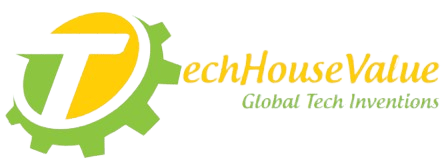Hyperconverged storage is reshaping the IT landscape for managed service providers (MSPs). It offers scalability and efficiency to improve business continuity and disaster recovery (BCDR) strategies.
Traditional data center hardware components like servers, networks, and storage are consolidated into one appliance controlled with software. This simplifies operations and upgrades through automation and centralized management.
Scalability
The scalability of hyperconverged storage is one of the main things that sets it apart from traditional infrastructure. It’s an ideal solution for businesses that want to scale their operations without worrying about reworking their existing processes and infrastructure.
Adding new nodes to an HCI cluster with different resource configurations is easy as business needs change. For example, you can add storage-heavy nodes when your system runs full of data or use CPU-heavy nodes when more computing power is required. It’s a great way to avoid overprovisioning resources and minimize wasted spending.
HCI solutions are based on stock hardware, which means they’re typically more affordable than legacy systems that use customized, expensive components. This reduced price can reduce CapEx and OpEx expenses by lowering software licensing fees and hardware maintenance costs and decreasing the number of IT specialists required for management.
Hyperconverged solutions are also less physical than legacy systems, which can reduce the overall footprint of your data center. This makes it easier to move your data centers and free up space for additional projects. This flexibility is essential when it comes to preparing for the future. As your business grows, you’ll need to be able to adapt quickly without having to rethink your entire IT infrastructure.
Simplicity
Since hyper-converged storage combines multiple components into a single system, it reduces the number of hardware elements you need to manage. You don’t have to manage separate SANs, NAS devices, and the cloud. Instead, a single cluster can be configured with the right mix of storage and compute resources. That means a more powerful performance-boosting solution for your business or a more cost-effective one, depending on your needs.
Hyperconverged storage also simplifies troubleshooting and maintenance by eliminating silos of data. If a problem occurs in the networking, storage, or computing tiers, you can shift workloads to another node in the same cluster. If the problem is more severe, deploying a new node can easily add capacity.
Hyper-converged storage makes sense as IT departments are constantly challenged to do more with less. Its centralized management and scalable architecture provide the flexibility to meet your organization’s IT goals and support emerging initiatives like AI, machine learning (ML), and big data. However, it’s important to note that hyperconverged storage isn’t suitable for all workloads and applications.
Some applications need performance that surpasses what hyper-converged systems can deliver. These include high-performance computing (HPC) and generative artificial intelligence (AI). If these are important to your business, you’ll want to consider a vendor that offers hardware that can meet these needs.
Efficiency
Hyperconverged storage virtualizes and manages hardware components to improve resource utilization. It removes the need for multiple physical disk arrays, NAS filers, or cloud assets, each with its management system and often running on different operating systems. This means that resources are shared more effectively, which boosts performance and reduces operational costs. Hyper-converged solutions also incorporate load balancing and software-defined networking applications to optimize storage resources for target workloads.
While HCI technology began in small use cases, such as virtual desktop infrastructure (VDI), it’s now a standard option for businesses looking to simplify IT resource deployment, management, and scaling. This also translates into easier troubleshooting and disaster recovery because issues can be resolved by simply shifting workloads to new or replacement nodes within the HCI cluster.
HCI systems can be delivered as appliances, which provide both the hardware and the software, or as software-only products. The former offers flexibility as IT can choose from a wide range of off-the-shelf hardware, while the latter is hardware-agnostic and works with any existing servers in the data center. This provides the freedom to go all-flash or hybrid and to work with different server vendors without worrying about compatibility issues. It also saves on capital expenses because IT doesn’t have to buy additional physical hardware. It also frees IT staff to focus on more strategic tasks, such as driving innovation with new applications and initiatives.
Security
Compared to traditional storage solutions, hyperconverged infrastructure offers enhanced scalability and reliability. It also uses a scale-out architecture, allowing you to add appliances in granular increments – reducing upfront costs and improving data efficiency. Its low-cost x86 hardware leverages Moore’s law to increase power and performance, making it ideal for managing workloads.
In addition, hyper-converged software focuses on delivering computing, networking, and storage, enabling IT to quickly deploy and manage applications – all while delivering lower TCO and faster remote deployments. Additionally, hyper-converged solutions offer more operational agility – since computing, networking, and storage resources are consolidated, problems can be addressed with simple shifts of workloads between nodes.
At The End
As a result, IT spends less time troubleshooting hardware-related issues and more time on business priorities. Hyperconverged solutions also eliminate the need for specialized hardware, which can reduce overall IT costs and speed up the time to market for new products.
Although hyperconverged solutions offer many benefits, they can have a few challenges. Among them is the initial migration of workloads to the platform. This can be time-consuming and complicated. To make this process easier, administrators should identify any VM snapshots that require migration and scan the data store for unused disk files. They should also use specialized tools offered by IT vendors to complete the task.

